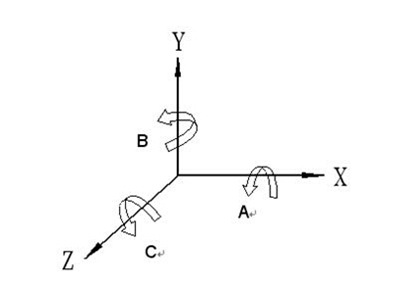
CNC machine tool axis
With the continuous development of drilling production, the use conditions of drilling rigs have become more and more diversified, and various types of drilling rigs have appeared accordingly. Factors affecting the type and composition of drilling rigs include drilling method, drilling depth, borehole size and drilling tool size, and drilling area conditions (such as electricity or fuel, transportation, and meteorological conditions).
1. According to drilling method
(1) Impact drilling rigs, such as wire rope impact drilling rigs (drilling rigs), vibration drilling rigs, etc.
(2) Rotary drilling rigs, such as those used in rotary drilling.
(3) Downhole power drilling tools, such as rotary drilling tools, turbo drilling tools, screw drilling tools, electric drilling tools, etc.
2. Divided by drilling depth
(1) Ultra-deep well drilling rig. It adopts a drilling rig with a diameter of 114 mm drill pipe, a nominal drilling depth range of more than 7000 meters, and a maximum hook load of more than 4,500 kN.
(2) Deep well drilling rig. The drill rod is 114 mm in diameter, the nominal drilling depth is 4000-7000 meters or more, and the maximum hook load is 2250-4500 kN or more.
(3) Drilling rigs for medium and deep wells. It adopts a drilling rig with a diameter of 114 mm drill pipe, a nominal drilling depth range of 1500-4000 meters or more, and a maximum hook load of 900-2250 kN or more.
Three, according to power equipment
(1) Diesel Engine-driven drilling rigs, which use diesel engines as power through mechanical transmission or hydraulic transmission.
(2) AC driven drilling rig, suitable for use in oil fields with industrial power grids.
(3) The drilling rig is driven by direct current, and the working unit is driven by a direct current motor.
Fourth, according to the driving mode
(1) Drive alone. Each working machine is driven by generators of different sizes, which are mostly used for electric drive. The transmission is simple and easy to install, but the power utilization rate is low and the total equipment mass is large.
(2) Unified drive. The three working units of drawworks, drilling Pump and turntable are driven by the same power unit. Most drilling rigs use this scheme. The unified drive can also include only one drilling pump, and the other drilling pump is driven separately. The unified drive drilling rig has high power utilization and can be adjusted mutually when the engine fails, but the transmission is complicated, installation and adjustment are troublesome, and the transmission efficiency is low.
(3) Group drive. The combination of power is between individual drive and unified drive. There are two options for three working machines. The power utilization rate of this kind of drilling rig is higher than that of a single drive, and the transmission ratio is simple to drive in a unified manner. Two sets of working machines can also be installed on different heights and scattered sites.
Oil Drilling Rigs,Mine Drilling Rigs,Water Well Drilling Rigs,Exploration Drilling Rigs
Rugao Yaou Import & Export Trade Co., Ltd , https://www.ntyaous.com